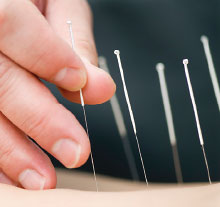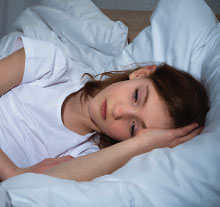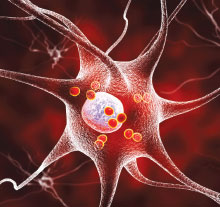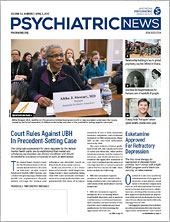Sex, Age Do Not Inhibit Efficacy of BED Drug
Research has suggested that younger people and females with binge-eating disorder (BED) may respond better to medications than older and/or male patients. However, this hypothesis has not been tested on the newest approved BED medication: lisdexamfetamine dimesylate (LDX). A study appearing in the Journal of Clinical Psychiatry reports that age and sex do not appear to moderate the efficacy of LDX.
Investigators at Virginia Commonwealth University and Shire Plc pooled and evaluated data from a pair of large randomized clinical trials that evaluated LDX for moderate to severe BED over 12 weeks; the combined data included more than 700 adults with BED. They examined outcomes to compare symptom improvements between men and women and between adults over and under 40 years of age.
The investigators found that both of the main study outcomes—average number of binge-eating days per week and total score on the Yale-Brown Obsessive-Compulsive Scale modified for Binge Eating—were comparable between men and women and between age groups.
There was also no difference in LDX-related side effects between the age groups, but side effects did occur more frequently in women (70 percent) than men (53 percent). Among individual side effects, decreased weight and diarrhea were more common in men, while headache, nausea, fatigue, constipation, increased heart rate, feeling jittery, and anxiety were more common in women.
Acupuncture May Alleviate Menopausal Symptoms
A brief course of acupuncture (five weekly treatments) can help reduce hot flushes, sleep problems, and other symptoms of menopause, according to a clinical study published in BMJ Open.
Because acupuncture studies have no good placebo for comparison, these findings have some limitations. However, they do suggest that acupuncture could substitute for the hormonal therapy that many menopausal women avoid due to the potential side effects.
Researchers at the University of Copenhagen enrolled 70 menopausal women aged 40 to 65 who reported moderate to severe menopausal symptoms. Thirty-six of the women received a 15-minute acupuncture session each week for five weeks, and the remaining 34 women received no treatment (but then received acupuncture after six weeks). Each participant completed the MenoScores Questionnaire (MSQ) that rates 12 different menopausal symptoms at baseline, three weeks, and six weeks.
By six weeks, the women receiving acupuncture reported statistically lower scores on several MSQ symptoms compared with the control group, including hot flushes, sweating, sleep disturbances, emotional changes, physical problems, and skin/hair problems. The improvements in hot flushes, emotional changes, and skin/hair problems were evident within three weeks.
The acupuncture procedure was also well tolerated. There were no reports of serious side effects, and only four women experienced mild side effects. Additionally, only one woman dropped out of the study because she considered the needling unpleasant.
Sleep Problems More Frequent in Young Children With Autism Traits
In one of the largest studies examining sleep behaviors in preschool-age children, researchers at the University of Colorado and colleagues have shown that sleep problems are about twice as common in children with autism spectrum disorder (ASD) or ASD-like developmental delays as typically developing children.
The findings, published in the journal Pediatrics, were derived from the Study to Explore Early Development (SEED), a large, community-based study of children 30 to 68 months of age. This analysis incorporated data from 1,987 SEED participants, including 522 children with ASD, 228 children with other developmental delays with ASD characteristics (DD w/ASD), 534 children with other developmental delays without ASD characteristics (DD w/o ASD), and 703 typically developing children.
All SEED participant families were given a Children’s Sleep Habits Questionnaire (CSHQ), which asks about eight sleep-related problems: resistance to bedtime, sleep-onset delay, sleep duration, sleep anxiety, waking at night, parasomnias (such as sleep tremors or sleepwalking), sleep-disordered breathing, and daytime sleepiness.
Using a CSHQ total score cutoff of 48 or higher, the researchers found that 47 percent of children with ASD, 57 percent of children with DD w/ASD, 29 percent of children with DD w/o ASD, and 25 percent of typically developing children reported sleep problems.
The authors suggested that the higher percentages in both the ASD and DD w/ASD groups suggest that sleep problems may be related to core ASD symptoms and/or the high prevalence of comorbidities like attention-deficit/hyperactivity disorder in these children.
Social Anxiety Found to Have Close Association With Alcohol Use Disorder
People with anxiety disorders are more likely to have alcohol use disorder (AUD), due to both genetic and environmental factors. A hereditary study published in Depression and Anxiety now indicates that social anxiety disorder (SAD) has a stronger relationship to AUD than other types of anxiety disorders.
Researchers at the University of Oslo and colleagues conducted interviews with over 2,000 adult Norwegian twins at two time points several years apart. The researchers used DSM-IV criteria to assess AUD, SAD, generalized anxiety disorder, panic disorder, and phobia disorders in the participants.
The researchers found that people with SAD within the past five years were 4.68 times as likely to also have had AUD within the past five years. This was the strongest association between an anxiety disorder and AUD (generalized anxiety disorder was second, with 3.88 times increased risk of AUD).
In addition, SAD was the only anxiety disorder that showed a temporal effect on AUD; that is, twins who had SAD and not AUD during the first interview were more likely to develop AUD by the second interview.
“Interventions aimed at the prevention and treatment of SAD are, therefore, likely to have an additional beneficial effect of reducing the risk for AUD,” the researchers wrote. “Interventions aimed at other anxiety disorders are unlikely to have a similar additional effect on AUD.”
Study Identifies Predictors of Psychiatric Side Effects of Smoking Cessation Drugs
The recently completed Evaluating Adverse Events in a Global Smoking Cessation Study (EAGLES) found that smokers with a history of mental illness were more likely to experience a psychiatric side effect while trying to quit using varenicline, bupropion, or a nicotine patch (6 percent versus 2 percent of smokers with no mental illness history). Researchers at the University of California, San Diego, and colleagues have now identified patient characteristics associated with a greater risk of these psychiatric side effects such as depression, mania, or psychosis.
As reported in the Journal of General Internal Medicine, three traits were broadly predictive of an increased risk of a psychiatric side effects when quitting while taking a smoking cessation medication: being white, being anxious at the start of treatment, and having a history of suicidal behavior. In smokers with a psychiatric history, younger age, female sex, a history of substance use disorder, and prior treatment with smoking cessation pharmacotherapy also predicted greater risk.
The researchers found that the risk of developing a psychiatric side effect was not associated with any one treatment or significantly higher for any specific mental illness.
“To our knowledge, this is the first report that identifies easily obtainable patient-level and mental health-related characteristics, with the potential to help predict who is at heightened risk to experience moderate to severe [side effects] among smokers making a quit attempt,” the researchers wrote.
Anthenelli RM, Gaffney M, Benowitz NL, et al. Predictors of Neuropsychiatric Adverse Events With Smoking Cessation Medications in the Randomized Controlled EAGLES Trial. J Gen Intern Med. March 7, 2019. [Epub ahead of print]
REM Sleep Disorder Linked to Parkinson’s and/or Dementia
Idiopathic REM sleep behavior disorder (iRBD)—a condition in which people “act out” their dreams because normal REM sleep is disrupted—is often a precursor to neurodegenerative disorders like Parkinson’s disease and Lewy body dementia. In a large, international effort, a team led by researchers at McGill University followed 1,280 iRBD patients over several years to determine the rate of conversion from iRBD to Parkinson’s and/or dementia.
The patients were followed for 4.6 years on average (though some for up to 19 years), during which time 28 percent (352) developed at least one overt neurodegenerative problem; 199 of these patients developed Parkinson’s first, and 153 developed dementia first. The researchers calculated an average conversion rate of 6.25 percent per year and a 12-year conversion rate of 73.5 percent.
Patients with motor problems, olfactory problems, and mild cognitive impairment were much more likely to develop Parkinson’s and/or dementia. Other neuropsychiatric symptoms like depression, anxiety, and restless legs syndrome did not affect the risk of neurodegenerative conversion.
“It is not surprising that the highest hazard ratios were for motor and cognitive measures, since these are the primary means by which parkinsonism and dementia are defined,” the researchers wrote in Brain. “However, the high performance of olfactory testing as a predictor is notable, as it is also easily tested in office settings.” ■
Postuma RB, Iranzo A, Hu M, et al. Risk and Predictors of Dementia and Parkinsonism in Idiopathic REM Sleep Behaviour Disorder: A Multicentre Study. Brain. 2019; 142(3): 744-759.






